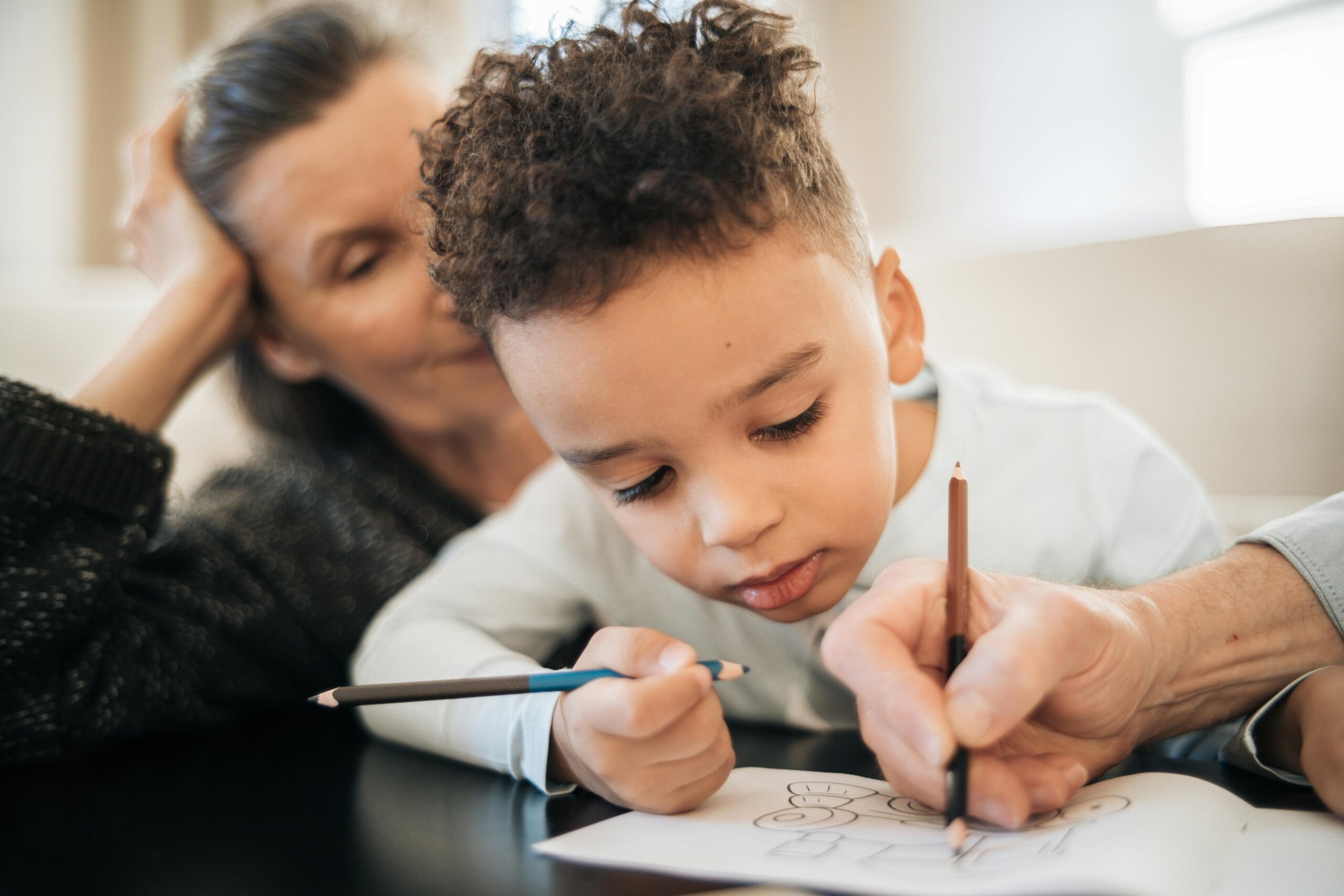Introduction
Picture this: your baby takes their first wobbly steps, giggling as they reach for your hand. It’s a magical milestone—but it’s only one of many. The early years of a child’s life are filled with crucial developmental moments, each building the foundation for lifelong learning, communication, and social skills. According to Pediatrics Review by Scharf et al. (2016), these initial years set the stage for future growth. As a parent, it’s both exciting and nerve-wracking to monitor these milestones, and you might wonder, “Am I doing this right?” Don’t worry—you’re not alone. Let’s explore expert advice on what to watch for and how to support your child at each developmental stage.
The Early Years: Birth to 12 Months
Based on findings from Wilks, Gerber, and Erdie-Lalena (2010), the first year is all about laying the groundwork for your baby’s future learning. During these months, you’ll witness rapid changes in motor skills, language development, and social interactions. Here’s a reality check: your baby’s development doesn’t always follow a straight line. For example, if they’re focused on learning to crawl, they might temporarily slow down in other areas, like language.
What should you look for during this period? Pediatricians suggest keeping an eye on these key markers:
- Social responses: Does your baby smile at familiar voices?
- Object exploration: Are they reaching for toys and trying to grab them?
- Early communication: Are they babbling, cooing, or making eye contact?
If you notice your child is missing a milestone, it’s natural to worry—but remember, each child is unique and develops at their own pace. Use this time to enjoy the little moments, like your baby’s first giggle or that look of wonder when they discover their toes!
The Toddler Adventure: 1-3 Years
Drawing from van Dommelen et al.’s (2023) research in Acta Paediatrica, toddlers are explorers, constantly pushing boundaries and testing their limits. It’s during these years that you might hear the words “No!” and “Mine!” more than ever. A study of 30,579 children revealed fourteen key milestones between 12-45 months that are particularly significant for predicting future development. These milestones involve a mix of physical, cognitive, and language skills, like:
- Walking independently by 18 months
- Using 50 words by age 2
- Climbing stairs and running by age 2.5
Toddlers can be unpredictable, but that’s part of the fun! Celebrate the wins, like when they say a new word or use a spoon on their own. At this age, developmental delays might become noticeable, but the good news is that early intervention can make a significant difference. Be proactive—your child’s pediatrician is your partner in identifying any areas that need extra support.
Preschool Powers: 3-5 Years
The preschool years bring a new level of independence and curiosity. Informed by AAP Practice Guidelines cited in Wilks et al. (2010), this phase emphasizes cognitive and language development. Your little one is transitioning from a toddler to a more confident and communicative child. Expect milestones like:
- Counting objects and understanding numbers
- Forming full sentences and asking endless “Why?” questions
- Showing empathy toward others
The American Academy of Pediatrics stresses the importance of systematic developmental screening during these years to ensure that children receive the support they need. This is the age when early interventions in areas like speech therapy or occupational therapy can yield remarkable results. If your child struggles with social interactions or has trouble articulating words, it’s better to address these concerns now rather than later. Remember, it’s not about perfection—it’s about progress.
When to Seek Support
According to van Dommelen’s 2023 findings, monitoring certain developmental markers between ages 1-4 can help identify children who might benefit from extra support. The study, involving over 31,000 children, found remarkable accuracy in predicting developmental patterns. Trust your instincts—if something feels off, it’s okay to seek help. Here are some signs that may warrant professional evaluation:
- Lack of eye contact or engagement with peers
- Limited vocabulary growth or difficulty following directions
- Unusual responses to sensory stimuli (e.g., sound, touch)
The CDC’s “Learn the Signs. Act Early.” program emphasizes that about 1 in 6 children has a developmental delay. The earlier the intervention, the better the outcomes. Early support can include speech therapy, physical therapy, or occupational therapy, all tailored to meet your child’s unique needs. Remember, seeking help isn’t a sign of failure—it’s a proactive step toward ensuring your child’s future success.
Using Apps to Track Your Child’s Growth: A Modern Parent’s Guide
Gone are the days of scribbling notes in baby books that collect dust on a shelf. Today’s parenting journey is all about digital convenience, and tracking apps offer just that. Think of these apps as your personal baby development assistant that’s available 24/7.
Why Digital Tracking is Your New Best Friend:
These apps help you log milestones, set reminders, and create growth charts with ease. No more guessing when your child last hit a milestone—everything is stored safely in your pocket. You can even share updates with family members and healthcare providers with a few taps, making the whole process seamless.
Cool Features That Make Tracking Fun
Tracking apps do more than record numbers. Here’s how they make milestone monitoring a joy:
- Visual growth charts: Compare your child’s growth to standard charts, giving you peace of mind.
- Photo integration: Snap photos alongside milestones to create a digital scrapbook of memories.
- Multiple profiles: Perfect if you have more than one child, making it easy to manage multiple records.
When it comes to your child’s development, trusting your instincts is essential. As a parent, you know your child best, and if you sense something isn’t right, it’s okay to seek professional advice. The CDC recommends developmental screenings at key intervals: 9, 18, and 30 months. These screenings can help identify potential delays early on, allowing for timely interventions. The Milestone Tracker app can be an effective tool, serving as a digital diary to log your observations, making it easier to share your concerns with healthcare professionals.
Early intervention can be transformative. Research shows that children who receive targeted support—like speech therapy, physical therapy, or occupational therapy—tend to see significant improvements in cognitive, social, and motor skills. Sometimes, all it takes is breaking tasks into smaller, manageable steps or experimenting with different teaching approaches. Don’t think of seeking help as a failure; it’s actually a proactive step toward unlocking your child’s potential and giving them the tools they need to thrive.
Integrating learning into everyday routines can also support your child’s growth in a natural and engaging way. For instance, ask your toddler to point out colors while getting dressed, or make bath time a mini-science experiment by exploring which toys float or sink. Singing songs during car rides, counting fruits at the grocery store, or matching socks while doing laundry can turn routine tasks into fun learning moments. These simple activities can boost your child’s physical, language, and social skills.
Fostering creativity is equally important. Encourage your child to explore their artistic side through drawing, pretend cooking, or storytelling. Such activities enhance fine motor skills, language development, and problem-solving abilities. Physical play is another powerful learning tool—whether it’s a dance party in the living room or an indoor obstacle course made of pillows and chairs. These games not only improve coordination and balance but also offer a joyful way to bond with your child.
Social skills can be nurtured through group play and role-playing activities. Set up a pretend store or restaurant where your child can take turns and interact with others. This kind of play teaches cooperation, sharing, and basic communication skills, laying the foundation for positive social interactions in the future.
Language and sensory development go hand in hand. Boost your child’s vocabulary by making storytime interactive—ask questions about the pictures, make up alternate endings, or let them narrate the story themselves. Engage their senses through texture exploration (e.g., a sensory box with different materials) or water play with cups and funnels. These experiences encourage curiosity and creativity, helping your child make sense of the world around them.
Conclusion: Take the Next Step in Monitoring Your Child’s Growth
Milestone monitoring isn’t just about tracking numbers—it’s about nurturing your child’s growth with love, patience, and the right tools. Are you already using a tracking app, or thinking about starting? If so, share your experience in the comments below!
If you found this guide helpful, don’t keep it to yourself—share it with other parents who might be interested in tracking milestones. And if you want more tips on child development, subscribe to our newsletter for updates and exclusive content.




